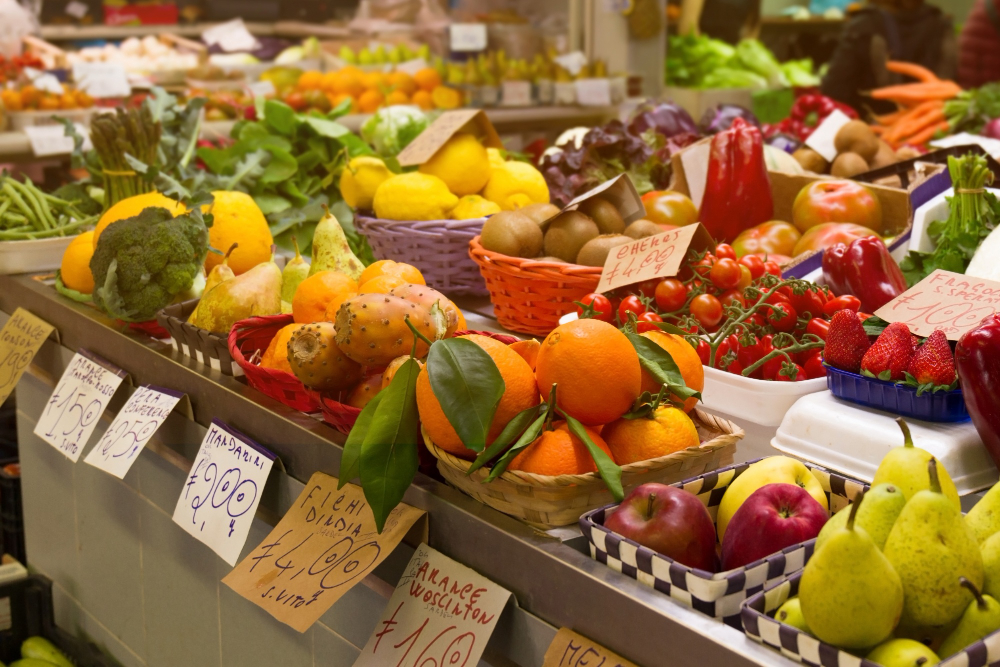May 31, 2024
The World Bank’s food price index eased in April after falling 4 percent in 2024Q1 (q/q). Wheat and maize prices hit three-year lows during the first four months of 2024, mostly attributed to larger production by major exporters and favorable prospects for the next harvest. Rice prices, which made significant gains in 2023Q4 and earlier in 2024, have also retreated since February, reflecting the currency depreciation of major exporters against the U.S. dollar, sluggish demand amid increased prices, and seasonal supply increases. Similarly, the oils and meals price index declined by 5 percent in 2024Q1 (q/q), mostly in response to near-record soybean production in Brazil, a near-doubling of production in Argentina, and subdued Chinese demand.
Two consecutive years of record-high grain supplies. Global grain supplies reached 4.1 billion tons in the 2023-24 crop season (up 1.2 percent from the previous season) and are expected to increase an additional 0.4 percent in 2024-25, according to the May update by the U.S. Department of Agriculture. In the 2023-24 crop season, global maize supply reached an all-time high, primarily reflecting production increases in the United States and Argentina of 12 percent and 47 percent (y/y), respectively. Wheat and rice supplies in the 2023-24 season are estimated to be the second and third highest on record, respectively. Global supplies in the 2024-25 crop year are projected to be lower for wheat and higher for maize and rice compared to 2023-24.
Three consecutive years of record-high oilseed and edible oil supplies. Global oilseed supply is expected to increase by 5 percent in 2024-25, building on robust growth in the current season (+3 percent) and previous season (+5 percent). Similarly, global edible oil supplies are expected to increase by 1 percent in 2024-25, following 3 and 6 percent increases in 2023-24 and 2022-23, respectively. Oilseed and edible oil supplies have experienced three consecutive years of record highs, with oilseed supplies doubling in the last 15 years. Historically, these two commodity groups have been the fastest-growing commodities in terms of demand (oilseeds mainly driven by animal feed and edible oils driven by packaged food items).
Inventories for food commodities are expected to decline marginally in the upcoming season. The stock-to-use (S/U) ratio, a rough indicator of supply relative to projected demand, is expected to continue its downward trend that began four years ago. It stands currently at 26.9 percent, down from 30.2 percent in 2019 but much higher than its historical low of 17.3 percent in 2007. For the upcoming 2024-25 season, the S/U ratio for wheat is projected to register a marginal decline (mostly reflecting declining stocks in Russia and the EU), while the ratio for maize and rice remains flat.
Food prices are expected to ease. The World Bank’s food price index is expected to decline by 6 percent in 2024 and an additional 4 percent in 2025. However, the outlook is subject to several risks, including weather (especially the upcoming La Niña episode), geopolitics (which could affect input prices such as energy and fertilizers), and potential maritime chokepoints (which could increase transportation costs).
Source: World Bank
Legal Notice: The information in this article is intended for information purposes only. It is not intended for professional information purposes specific to a person or an institution. Every institution has different requirements because of its own circumstances even though they bear a resemblance to each other. Consequently, it is your interest to consult on an expert before taking a decision based on information stated in this article and putting into practice. Neither Karen Audit nor related person or institutions are not responsible for any damages or losses that might occur in consequence of the use of the information in this article by private or formal, real or legal person and institutions.






